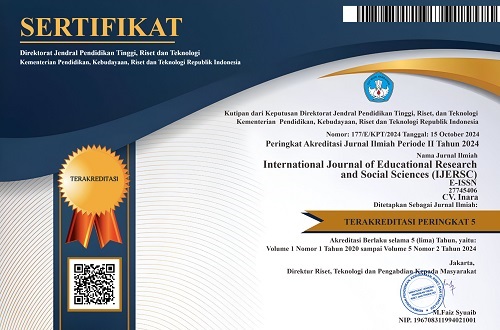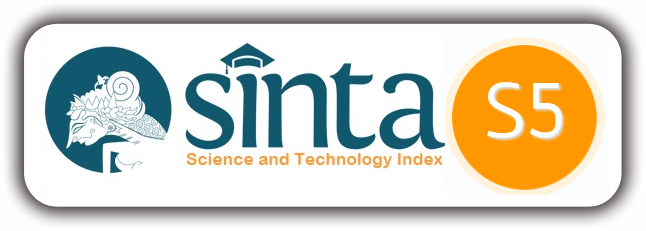Relevance Of Using The Edge Component In Teaching Biology
DOI:
https://doi.org/10.51601/ijersc.v6i2.963Abstract
This article discusses the importance and relevance of using edge components in biology education. During the educational process, students will be given a diagnostic survey to get acquainted with the rare plants of their region and determine the level of knowledge of the regional material by students of the Sarsen Amanzholov Higher College. The local history work contains data reflecting the natural, economic, social and cultural interrelation of the region under study. In addition, the most effective way of rational consideration of regional components in unity is to consider the scientific worldview of students, a holistic image of the environment, scientifically based environmental and socio-cultural attitudes, and a system of value-oriented relations.
Downloads
References
Law of the Republic of Kazakhstan"On Education", approved by Order No. 319-III of the Air Defense System of July 27, 2007 бекітілген «Білім туралы» заңы, Астана, Ақорда,withadditions and amendments to Order No. 487-IV of the Air defense System of Astana, Akorda and October 24, 2011
Concept of development of higher education and Science in the Republic of Kazakhstan for 2023-2029 Resolution of the Government of the Republic of Kazakhstan dated March 28, 2023 No. 248
Red Data Book of Kazakhstan. - 2nd edition, revised and expanded. Volume 2.: Plants (co-author). Almaty:,, "ArtPrintXXI", 2014. - 452 p. - Bibliogr. at the end of the article by the author). - Almaty: "ArtPrintXXI", 2014.
Savinova E. V., Semchuk N. M. Istoriya stanovleniya printsipa kraevedeniya v metodike shkolnogo estestvoznaniya [History of the formation of the principle of local lore in the methodology of school natural science]. - 2008. - No. 6. - p. 121, 122.
Amantaeva A. K., Childibaev Zh. B. puti razvitiya ekologicheskoy kompetentnosti obuchayushchikhsya na osnove komponentov soderzhaniya ekologicheskogo obrazovaniya [Ways to develop environmental competence of students based on components of environmental education content]. – 2019. – №3(112). - P. 116-120.
Amantaeva A. K., Childibaev Zh. B. Development of environmental competence of trainers on the basis of the components for ecological education // Developing educational environment in school, college and university - modern trends and research: mater. intern. of sciences. Practical conference-Almaty; Moscow, 2019. - pp. 56-62.
Grudzinskaya L. M., Gemedzhieva N. G., Nelina N. V., Karzhaubekova Zh. Zh. Annotated list of medicinal plants of Kazakhstan: Reference publication. Almaty, 2014. - 200 p. (In Russian).
Panov V. I. Ekologicheskaya psikhologiya: napravleniya i tendentsii [Ecological psychology: directions and trends]. https://ecopoiesis.ru/stat/article_post/ekologicheskaya-psihologiya-psihologiya. 25.08.2021.
Sanchez-Muñoz R., Carrió M., Rodríguez G. et al. A hybrid strategy to develop real - life competences combining flipped classroom, jigsaw method, and project-based learning // Journal ofBiological Education. – 2020. – Vol. 12, №6. – Р. 1-12.
Amantayeva A., Karbayeva Sh., Childibayev Zh. et al. Forming environmental competence in future biology techers through project tasks // Cypriot Journal of Educational Sciences. – 2022. – Vol. 17, №2. – Р. 664-675.
Fathurrahman, F., Irawan, A. ., & Fridayanti, sri . (2023). Effectiveness Of Regional Regulation Number 20 Of 2001 Regarding Regulation Of Street Traders And Seasonal Street Traders In Tarakan City. International Journal of Educational Research &Amp; Social Sciences, 4(3), 429–434. https://doi.org/10.51601/ijersc.v4i3.652.
Sulaiman, S., Halim Soebahar, A. ., & Mundir, M. (2023). Madrassa Diniyah Curriculum Transformation In Pesantren: A Study Of Wali Songo Mimbaan And Salafiyah Syafi’iyah Sukorejo Pesantren In Situbondo. International Journal of Educational Research &Amp; Social Sciences, 4(3), 444–453. https://doi.org/10.51601/ijersc.v4i3.659.
Downloads
Published
How to Cite
Issue
Section
License
Copyright (c) 2025 International Journal of Educational Research & Social Sciences

This work is licensed under a Creative Commons Attribution 4.0 International License.






















